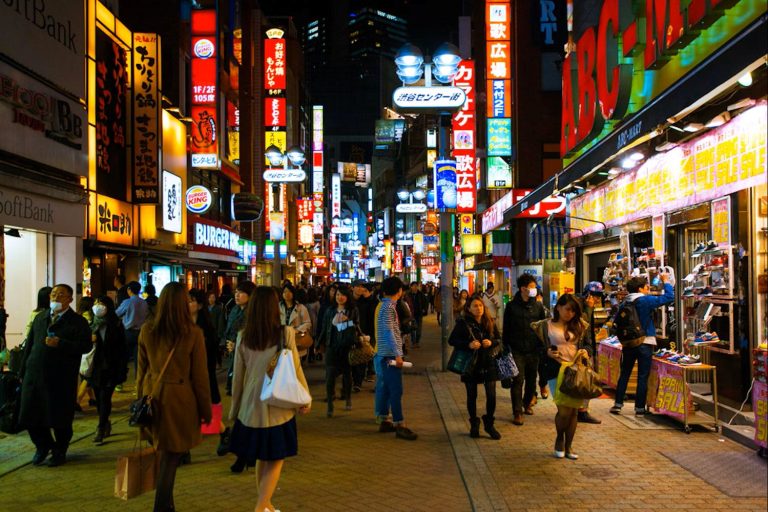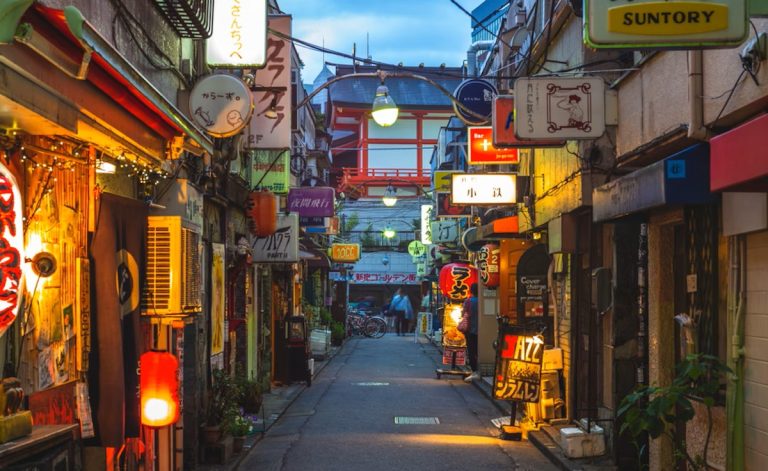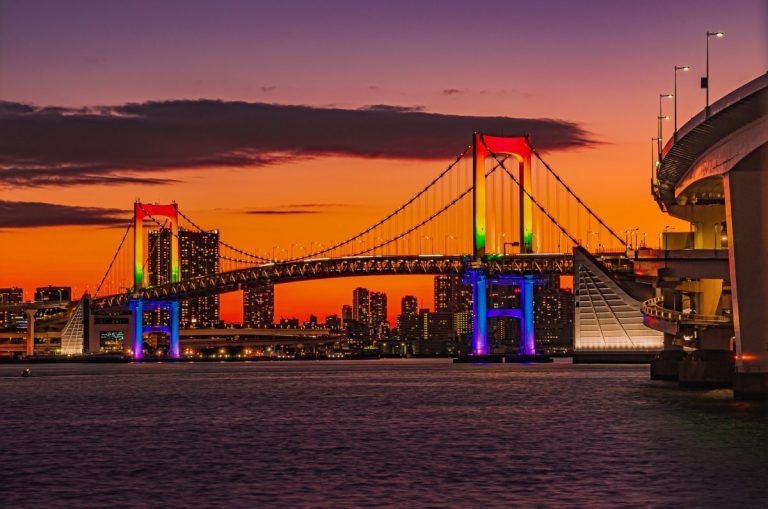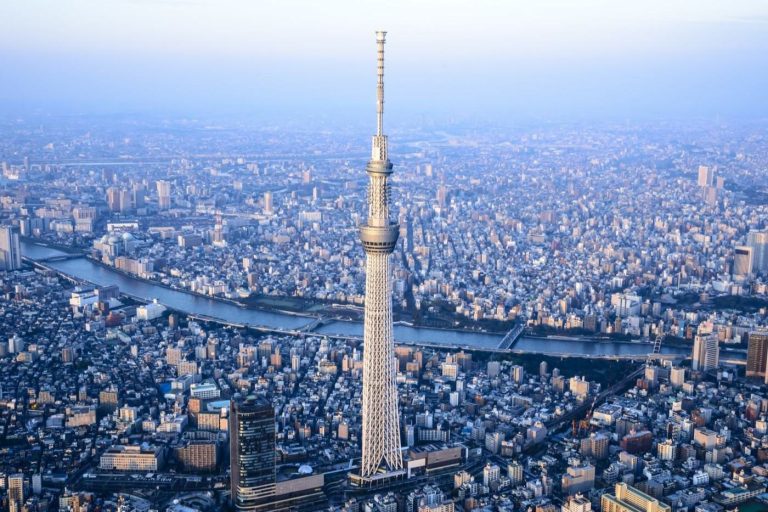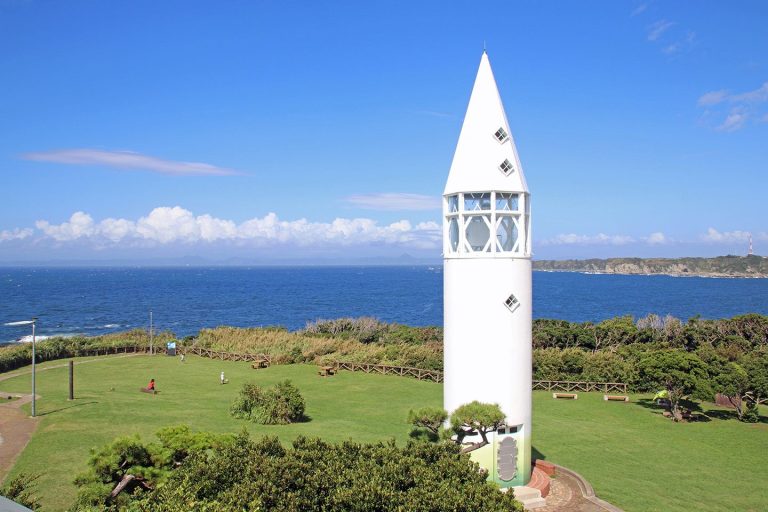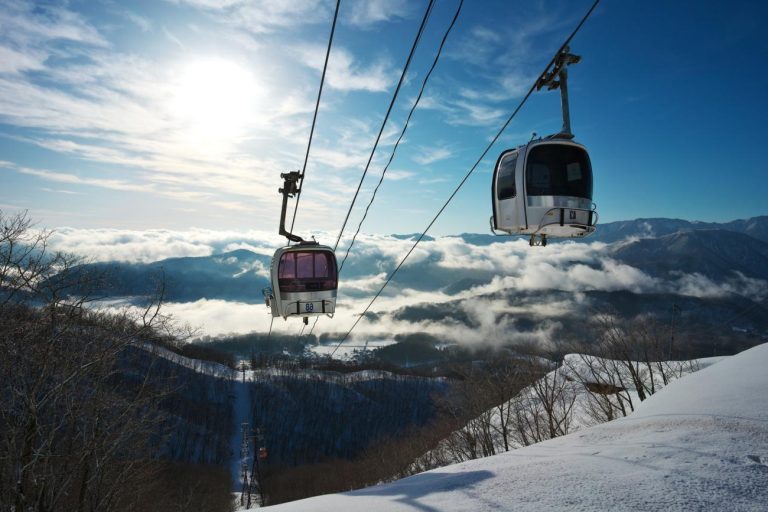Overview of Yokohama City Loop Bus
The Yokohama City Loop Bus represents one of Japan’s most charming public transportation experiences, offering visitors a delightful way to explore the historic port city’s premier attractions. This distinctive service connects major tourist destinations throughout the Minato Mirai and Bay areas, making it an essential tool for both first-time visitors and seasoned travelers looking to maximize their sightseeing efficiency.
What sets this bus service apart is its thoughtful design and strategic routing, which eliminates the confusion often associated with navigating unfamiliar public transit systems. The loop format ensures that passengers can easily hop on and off at various stops without worrying about complex route planning or getting lost in the city’s transportation network.
The service has become synonymous with Yokohama tourism, providing not just transportation but an integral part of the sightseeing experience itself. Its popularity stems from the perfect balance of convenience, affordability, and cultural immersion it offers to travelers.
Introduction to the Akai Kutsu Bus
The Akai Kutsu, meaning Red Shoes in Japanese, serves as the flagship vehicle for Yokohama’s loop bus system. These specially designed buses feature a distinctive retro aesthetic that immediately catches the eye with their nostalgic charm and elegant styling. The name itself carries deep cultural significance, referencing a beloved Japanese children’s song about red shoes.
Each Akai Kutsu bus is carefully maintained to preserve its vintage appearance while incorporating modern safety features and comfort amenities. The interior design complements the exterior’s classic look, creating an atmosphere that transports passengers back to a bygone era of Japanese transportation.
Historical Significance of the Bus
The Akai Kutsu bus system was established as part of Yokohama’s commitment to preserving and celebrating its rich maritime heritage. The service began operations to commemorate significant milestones in the city’s development, particularly focusing on its role as one of Japan’s first international ports.
The registration plate number 150 holds special meaning, as it was chosen to honor Yokohama port’s 150th anniversary in 2009. This attention to historical detail reflects the city’s dedication to maintaining connections with its past while serving modern tourism needs.
Key Features of the Bus Service
The loop bus system operates with remarkable efficiency, featuring frequent departures and strategically located stops at all major tourist attractions. The buses are equipped with multilingual announcements and clear signage to assist international visitors in navigating the route successfully.
Modern amenities include air conditioning, comfortable seating, and wheelchair accessibility features. The large windows provide excellent views of the cityscape, making the journey itself an enjoyable part of the sightseeing experience rather than merely a means of transportation.
Sightseeing Attractions Along the Route
The carefully planned route encompasses Yokohama’s most celebrated destinations, creating a comprehensive tour of the city’s highlights. Each stop offers unique experiences, from cultural immersion to shopping opportunities, ensuring that every passenger finds something appealing along the journey.
The strategic positioning of bus stops maximizes convenience while minimizing walking distances to attraction entrances. This thoughtful planning makes the service particularly valuable for families with children, elderly visitors, or anyone preferring to conserve energy for exploring rather than walking between distant locations.
The route’s design also considers optimal timing for photography and sightseeing, with stops positioned to take advantage of the best viewing angles and lighting conditions throughout the day. This attention to detail enhances the overall tourist experience significantly.
Chinatown: A Cultural Hub
Yokohama Chinatown stands as one of the largest and most vibrant Chinese communities in Japan, offering an authentic cultural experience just steps from the bus stop. The area features over 600 shops and restaurants, creating a bustling atmosphere that engages all the senses with aromatic foods, colorful decorations, and traditional architecture.
Visitors can explore traditional Chinese temples, sample authentic cuisine, and purchase unique souvenirs that reflect the area’s rich cultural heritage. The neighborhood’s compact layout makes it perfect for exploring on foot after arriving via the loop bus.
Motomachi: Shopping and Dining
Motomachi represents Yokohama’s sophisticated side, featuring upscale boutiques, cafes, and restaurants that cater to discerning tastes. This historic shopping district has maintained its reputation as a trendsetting area since the port opening era, blending international influences with Japanese sensibilities.
The tree-lined streets create a pleasant walking environment, while the diverse mix of shops ensures that visitors can find everything from high-end fashion to unique local crafts. The area’s cafe culture provides perfect opportunities for rest and refreshment between shopping excursions.
Yamashita Park: Green Oasis by the Bay
This waterfront park offers a peaceful retreat from urban excitement, featuring beautiful gardens, walking paths, and stunning views of Yokohama Bay. The park’s design incorporates both Japanese and Western landscaping elements, creating a unique aesthetic that reflects the city’s international character.
Visitors often spend considerable time here enjoying the sea breeze, taking photographs of the harbor, and relaxing on benches while watching ships pass by. The park also hosts various seasonal events and festivals throughout the year.
The Red Brick Warehouse: Shopping and Events
The historic Red Brick Warehouse has been transformed into a cultural and commercial complex that hosts art exhibitions, concerts, and special events. The building’s industrial architecture provides a striking contrast to the modern developments surrounding it, creating a unique atmosphere for shopping and entertainment.
The complex features both indoor and outdoor spaces, with the outdoor area often hosting seasonal markets, food festivals, and cultural performances. This versatility makes it a dynamic destination that offers different experiences depending on the time of visit.
Tickets and Fares
The fare structure for Yokohama’s loop bus system is designed to be both affordable and flexible, accommodating different travel patterns and budget considerations. Understanding the various ticket options available helps visitors choose the most cost-effective approach for their specific itinerary and travel plans.
The pricing strategy reflects Yokohama’s commitment to making tourism accessible while maintaining high-quality service standards. Regular fare updates ensure that the system remains sustainable while continuing to offer excellent value for money compared to alternative transportation methods.
Ticket purchasing is straightforward, with multiple options available to suit different preferences and technological comfort levels. The system accepts both cash and electronic payments, making it convenient for both domestic and international visitors.
Standard Fare Structure
The basic fare for adults is 220 yen per ride, while children pay 110 yen, making it one of the most affordable sightseeing transportation options in the region. These rates apply to single journeys regardless of the distance traveled or number of stops passed.
Fares can be paid using cash, IC cards, or other electronic payment methods accepted throughout Japan’s public transportation network. This flexibility ensures that visitors familiar with other Japanese transit systems can use their preferred payment methods without difficulty.
Minato Burari Ticket Options
The Minato Burari Ticket, priced at 700 yen for adults and 350 yen for children, provides unlimited rides on the loop bus system for one full day. This ticket also includes access to other Yokohama city buses and subway lines, significantly expanding transportation options throughout the metropolitan area.
Purchasing this ticket becomes cost-effective after just four single rides, making it an excellent choice for visitors planning to explore multiple attractions. The ticket’s validity period runs from the first use until the last service of the same day.
Benefits of the Minato Burari Ticket-WIDE
The enhanced Minato Burari Ticket-WIDE, available for 750 yen for adults, extends coverage to include transportation to Shin-Yokohama Station. This expanded access makes it particularly valuable for visitors staying in different parts of the city or those arriving via the shinkansen bullet train system.
Additionally, ticket holders receive discounts at affiliated stores and attractions throughout Yokohama, adding extra value beyond transportation savings. These partnerships with local businesses create a comprehensive tourism package that benefits both visitors and the local economy.
Itineraries for First-time Visitors
First-time visitors to Yokohama often feel overwhelmed by the city’s numerous attractions and the challenge of creating an efficient sightseeing plan. The loop bus system simplifies this process by providing a logical framework for exploration while ensuring that travelers don’t miss any major highlights during their visit.
The recommended itineraries take into account factors such as attraction opening hours, crowd patterns, and optimal lighting conditions for photography. This careful planning helps visitors make the most of their time while avoiding common tourist pitfalls like arriving at closed attractions or missing the best viewing times.
Flexibility remains a key advantage of using the loop bus system, as visitors can easily modify their plans based on personal interests, weather conditions, or unexpected discoveries along the route. This adaptability makes the service suitable for both structured and spontaneous travel styles.
Suggested One-Day Itinerary
A well-planned day begins with an early morning departure to the Yokohama Port Opening Memorial Hall, also known as Jack’s Tower, where visitors can appreciate the historic architecture and learn about the city’s maritime heritage. The morning hours provide the best lighting for photography and smaller crowds for a more intimate experience.
Midday activities center around Chinatown, where lunch options abound and cultural exploration can continue at a leisurely pace. The afternoon is perfect for visiting Yamashita Park and the Red Brick Warehouse, taking advantage of the pleasant sea breezes and beautiful harbor views as the day progresses toward evening.
Must-See Attractions
The Osaragi Jiro Memorial Museum offers a unique cultural experience dedicated to the famous Yokohama-born writer known for his love of cats. This lesser-known gem provides insight into local literary history while offering exclusive treats like their signature cheesecake that can’t be found elsewhere.
The Osanbashi Passenger Terminal serves as an excellent finale to any Yokohama visit, offering panoramic views of the port that are particularly stunning during sunset and evening hours. The terminal’s modern architecture creates an interesting contrast with the historic attractions visited earlier in the day.
Dining Recommendations
Alte Liebe restaurant provides a European-style dining experience complete with live music, creating a sophisticated atmosphere for lunch or dinner. The restaurant’s location along the bus route makes it easily accessible while offering a unique cultural fusion that reflects Yokohama’s international character.
Chinatown offers countless dining options ranging from casual street food to elegant banquet-style restaurants. The variety ensures that visitors with different dietary preferences and budget considerations can find suitable options while experiencing authentic Chinese cuisine adapted to Japanese tastes.
Schedule and Frequency
The loop bus operates on a carefully planned schedule designed to maximize convenience for tourists while maintaining efficient service throughout the operating day. Understanding the timing patterns helps visitors plan their activities more effectively and reduces waiting times at bus stops.
Schedule reliability is a hallmark of the service, with punctual departures and arrivals that allow visitors to plan their day with confidence. The system’s consistency makes it particularly valuable for travelers with tight schedules or those trying to coordinate with other transportation connections like the Haneda to Shinjuku Express Bus for airport transfers.
Seasonal adjustments to the schedule accommodate changing daylight hours and tourist patterns, ensuring optimal service levels year-round. These modifications reflect the system’s commitment to serving visitor needs under varying conditions.
Daily Operating Hours
The bus service typically begins operations in the early morning and continues until evening, providing comprehensive coverage during peak sightseeing hours. Specific start and end times may vary seasonally, with extended hours during peak tourist seasons and holidays.
The first buses of the day allow early risers to beat crowds at popular attractions, while evening service ensures that visitors can enjoy dinner and nighttime activities before returning to their accommodations. This extended coverage makes the service valuable for both day trips and extended stays.
Weekend Frequency
Weekend service features increased frequency to accommodate higher passenger volumes, with buses arriving at stops more frequently than during weekdays. This enhanced service level recognizes that weekends represent peak tourism periods when demand for convenient transportation reaches its highest levels.
The improved weekend schedule reduces waiting times and ensures that popular attractions don’t become overcrowded due to transportation bottlenecks. This attention to capacity management enhances the overall visitor experience significantly.
Special Event Schedules
During major festivals, holidays, and special events, the bus service often implements modified schedules to handle increased passenger volumes and changing traffic patterns. These adjustments may include additional buses, extended operating hours, or temporary route modifications.
Advance notice of schedule changes is typically provided through official channels, allowing visitors to adjust their plans accordingly. The system’s flexibility in responding to special circumstances demonstrates its commitment to maintaining service quality under all conditions.
Cultural Heritage and Design
The visual design and cultural elements of the Akai Kutsu buses reflect Yokohama’s unique position as a bridge between traditional Japanese culture and international influences. Every aspect of the bus’s appearance has been carefully considered to create a cohesive aesthetic that honors the city’s heritage while appealing to modern sensibilities.
The design philosophy extends beyond mere appearance to encompass the entire passenger experience, from the moment visitors first see the bus approaching to their final departure at their chosen destination. This holistic approach creates lasting memories that extend far beyond simple transportation.
Cultural authenticity remains a priority throughout the design process, ensuring that the buses serve as genuine representations of Yokohama’s character rather than superficial tourist attractions. This commitment to authenticity resonates with visitors seeking meaningful cultural experiences.
Retro Aesthetic of the Buses
The buses feature carefully crafted vintage styling that evokes the golden age of public transportation while incorporating modern safety and comfort features. The exterior paint scheme, interior fabrics, and hardware details all contribute to creating an authentic period atmosphere.
This retro design philosophy extends to operational elements such as route signage and passenger information displays, which use fonts and graphics reminiscent of mid-20th century Japanese design. The consistency of these design elements creates a fully immersive experience for passengers.
Symbolism of the Akai Kutsu Name
The Red Shoes name carries deep emotional resonance in Japanese culture, referencing a beloved children’s song that tells the story of a young girl and her red shoes. This connection to childhood memories and cultural heritage makes the bus service feel familiar and welcoming to Japanese visitors.
For international visitors, the name provides an entry point into understanding Japanese cultural references while creating curiosity about the story behind the designation. This cultural bridge-building function aligns perfectly with Yokohama’s role as an international gateway city.
Significance of Registration Plate Number 150
The specific choice of registration number 150 demonstrates the city’s commitment to commemorating important historical milestones, specifically the 150th anniversary of Yokohama port’s opening in 2009. This attention to numerical symbolism reflects Japanese cultural practices of finding meaning in numbers and dates.
This commemorative element transforms each bus into a mobile monument to Yokohama’s history, ensuring that the city’s heritage remains visible and accessible to both residents and visitors. The registration number serves as a conversation starter and educational opportunity.
Discounts and Promotions
The loop bus system’s partnership network with local businesses creates additional value for visitors beyond basic transportation services. These collaborative relationships benefit both tourists and the local economy by encouraging exploration of diverse attractions and commercial establishments throughout the city.
Discount programs are regularly updated to reflect seasonal attractions, new business partnerships, and changing visitor preferences. This dynamic approach ensures that the benefits remain relevant and attractive to contemporary travelers while supporting local economic development.
The promotional structure is designed to be easily understood and utilized by visitors from various cultural backgrounds, with clear signage and simple redemption processes that don’t require extensive explanation or assistance.
Affiliated Store Discounts
Ticket holders can access special discounts at numerous shops, restaurants, and attractions throughout Yokohama, creating additional savings that often exceed the cost of the transportation ticket itself. These partnerships include both major tourist attractions and hidden local gems that might otherwise be overlooked.
The discount network covers diverse categories including dining, shopping, entertainment, and cultural attractions, ensuring that visitors with different interests can find relevant savings opportunities. This comprehensive coverage makes the ticket valuable for various travel styles and preferences.
Seasonal Promotions
Special promotional campaigns tied to seasons, holidays, and local events provide additional incentives for visitors to explore Yokohama during different times of the year. These promotions often include limited-time discounts, exclusive access to special events, or bonus services.
Seasonal promotions help distribute tourist traffic more evenly throughout the year while highlighting attractions and activities that are particularly appealing during specific seasons. This strategy benefits both visitors and local businesses by creating year-round tourism opportunities.
Loyalty Programs
Repeat visitors can benefit from loyalty programs that recognize frequent use of the loop bus system and affiliated services. These programs may include accumulated discounts, priority access to special events, or exclusive promotional offers not available to first-time users.
The loyalty structure encourages visitors to return to Yokohama and explore different aspects of the city during subsequent visits, building long-term relationships between tourists and the destination. This approach supports sustainable tourism development by fostering repeat visitation.
Additional Services and Accessibility
The loop bus system’s commitment to accessibility ensures that all visitors, regardless of physical abilities or special needs, can enjoy Yokohama’s attractions comfortably and safely. This inclusive approach reflects modern standards for public transportation while demonstrating the city’s dedication to universal tourism.
Additional services extend beyond basic transportation to include information support, connectivity with other transit systems, and assistance for international visitors. These supplementary offerings transform the bus service from simple transportation into a comprehensive tourism support system.
The integration of technology and human assistance creates multiple channels for visitor support, ensuring that help is available in formats that suit different preferences and technological comfort levels. This multi-faceted approach maximizes accessibility for diverse user groups.
Accessibility Features of the Buses
All buses in the fleet are equipped with wheelchair ramps, designated seating areas, and audio-visual announcements to assist passengers with mobility or sensory impairments. These features meet or exceed national accessibility standards while maintaining the buses’ aesthetic appeal.
Staff training includes assistance techniques for passengers with special needs, ensuring that the accessibility features are properly utilized and that all passengers receive appropriate support. This human element complements the physical accessibility infrastructure effectively.
Tourist Information Services
Multilingual signage, announcements, and printed materials help international visitors navigate the system confidently. Information is available in Japanese, English, Chinese, and Korean, covering the primary languages spoken by Yokohama’s international visitor population.
Digital information systems provide real-time updates on schedules, delays, and special events, while printed materials offer detailed maps and attraction information that visitors can reference throughout their journey. This combination of digital and physical information sources accommodates different user preferences.
Collaboration with Other Transit Services
The loop bus system integrates seamlessly with Yokohama’s broader public transportation network, including connections to major railway stations and other bus routes. This integration allows visitors to easily transition between different transportation modes without complicated transfers.
Partnership agreements with services like the Tokyo Disney Resort Shuttle and connections to major transportation hubs make it possible for visitors to incorporate Yokohama into broader regional itineraries. These connections expand the practical utility of the loop bus system beyond local sightseeing.
Frequently Asked Questions
What is the Yokohama City Loop Bus?
The Yokohama City Loop Bus is a public transportation service that connects major tourist attractions in Yokohama’s Minato Mirai and Bay areas, offering a convenient way for visitors to explore the city.
What are the key features of the Akai Kutsu buses?
The Akai Kutsu buses feature a retro aesthetic, modern safety features, air conditioning, comfortable seating, and are wheelchair accessible, providing a unique and comfortable travel experience.
How much does it cost to ride the loop bus?
The standard fare is 220 yen for adults and 110 yen for children per ride, with various ticket options available for unlimited rides throughout the day.
Are there discounts available for loop bus ticket holders?
Yes, ticket holders can access special discounts at various shops, restaurants, and attractions in Yokohama, adding extra value to their travel experience.
How often do the buses run?
The buses operate on a regular schedule, with increased frequency during weekends and special events to accommodate higher passenger volumes.
Exploring Yokohama with Ease
The Yokohama City Loop Bus not only simplifies transportation but also enriches the sightseeing experience, allowing travelers to immerse themselves in the city’s culture and attractions without the hassle of navigation. With its blend of history, convenience, and accessibility, this bus service is an invaluable asset for anyone looking to make the most of their time in Yokohama.
